We may earn revenue from the products available on this page and participate in affiliate programs. Learn More ›
Long before spring arrives, gardeners begin dreaming of gardens filled with an abundance of beautiful flowers. If you plan to sow flower seeds (as opposed to purchasing plants already started), it’s wise to consider germination rates and times. While unusual and exotic flowers are attractive, a high success rate of germination is typically desirable.
Whether gardeners are starting seeds early in seed trays or planting directly into the garden, they’ll want to avoid common mistakes, such as planting too late or too early, or choosing seeds that are difficult or slow to germinate.
RELATED: 10 Foolproof Flowers Anyone Can Grow
1. Bachelor’s Button (Centaurea cyanus)
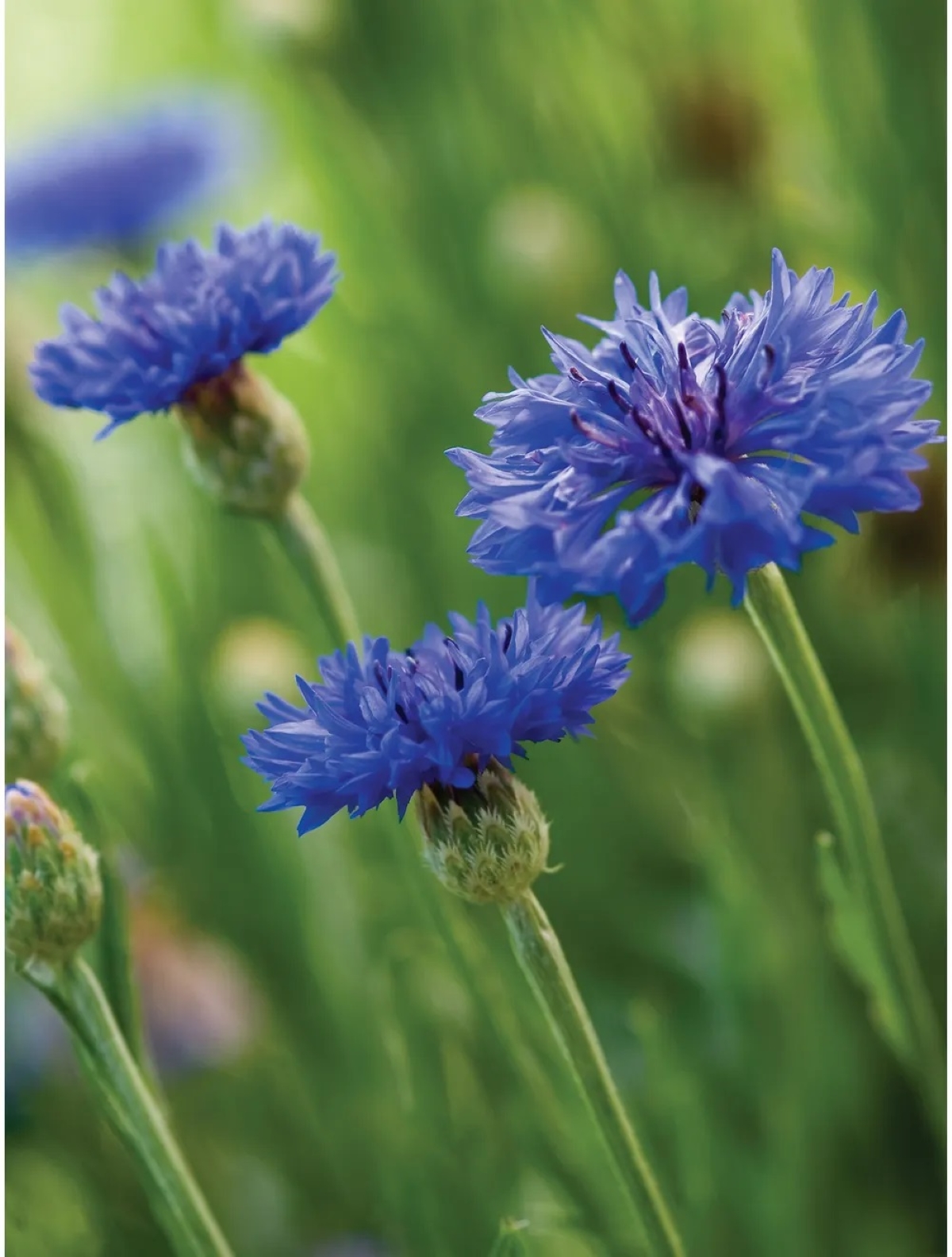
Known by many different monikers, most commonly “cornflower,” bachelor’s buttons are sun-loving flowers that are among the easiest to germinate and grow. While blue is the color most commonly associated with bachelor’s button, the plant is also available in red, pink, and purple. Drought-tolerant, they aren’t fussy about soil type and require little if any fertilizer. Grown as an annual in zones 2-11, Bachelor’s Buttons bloom from mid-summer to first frost on lacy silver-green foliage. They will self-sow for flowers the following year.
Get Bachelor’s Buttons seeds at Burpee for $4.45.
RELATED: I’m an Avid Gardener, and These Are My 10 Go-To Seed Companies
2. Nasturtium (Tropaeolum majus)

These cheerful, funnel-shaped flowers in yellow, orange, and red are easy to propagate and grow. Because the plants don’t transplant well, the quick-germinating, pea-sized seeds should be planted directly in the garden after danger of frost has passed. Able to tolerate poor or dry soil, and light exposure ranging from full sun to partial shade, these adaptable annuals are also edible. Bushy mounds of round leaves topped by bursts of colorful blooms last until frost.
Get the Nasturtium Alaska Mix at Burpee for $8.95.
3. Sweet Alyssum (Lobularia maritima)
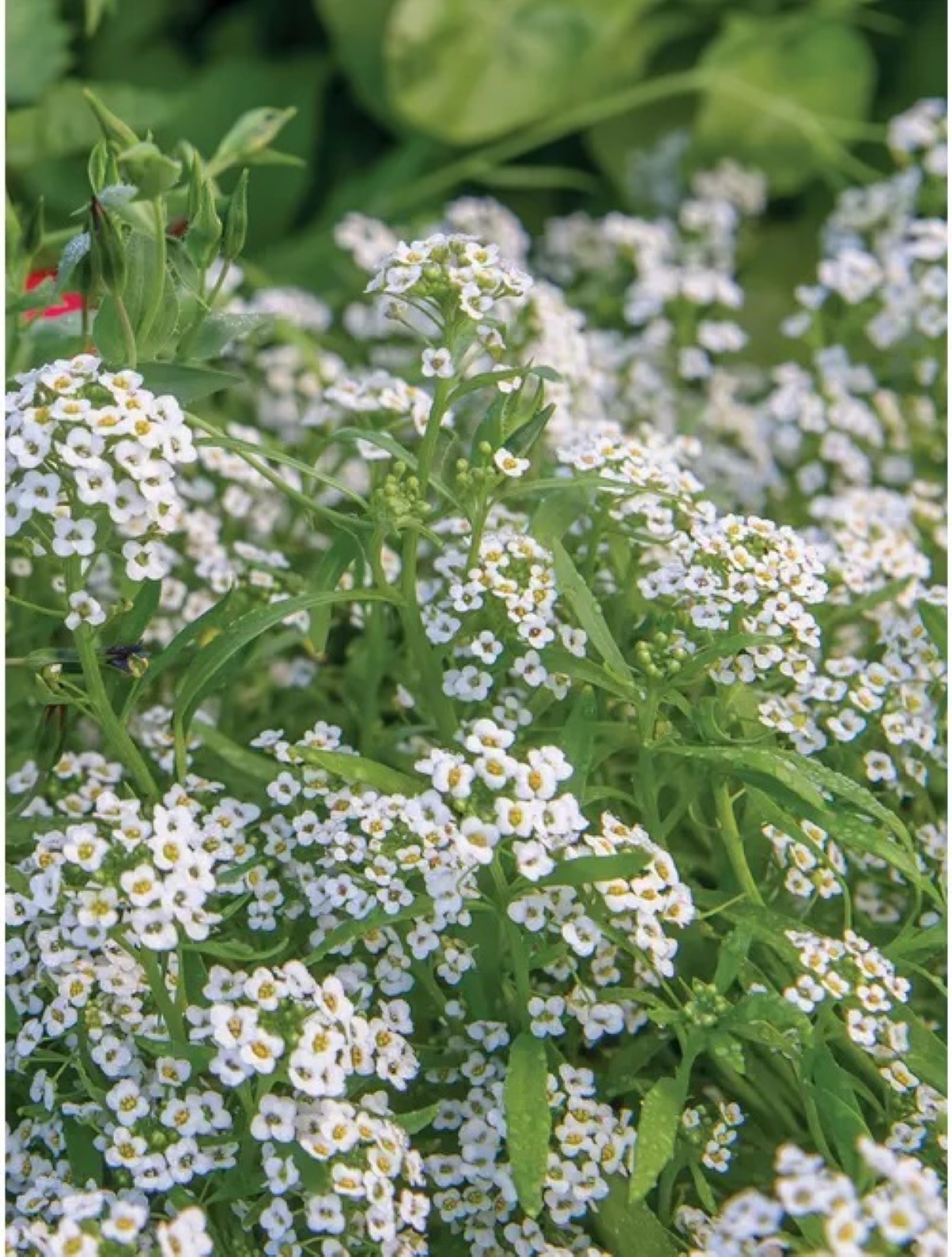
Sweet alyssum creates a fragrant, low-growing blanket of tiny, cross-shaped flowers of white, lavender, or purple that works well as a border or in pots. A cool-season flower, sweet alyssum seeds should be sown in the garden immediately after the final frost, germinating in as few as four days for spring blooms. Adaptable to full sun or part shade, it prefers well-drained, moist soil. Alyssum can fade in summer’s heat, but often makes an autumnal resurgence.
Get the Alyssum Carpet of Snow seeds at Burpee for $4.95.
RELATED: 8 Essential Tools and Materials for Starting Seeds Indoors
4. Sunflower (Helianthus annuus)
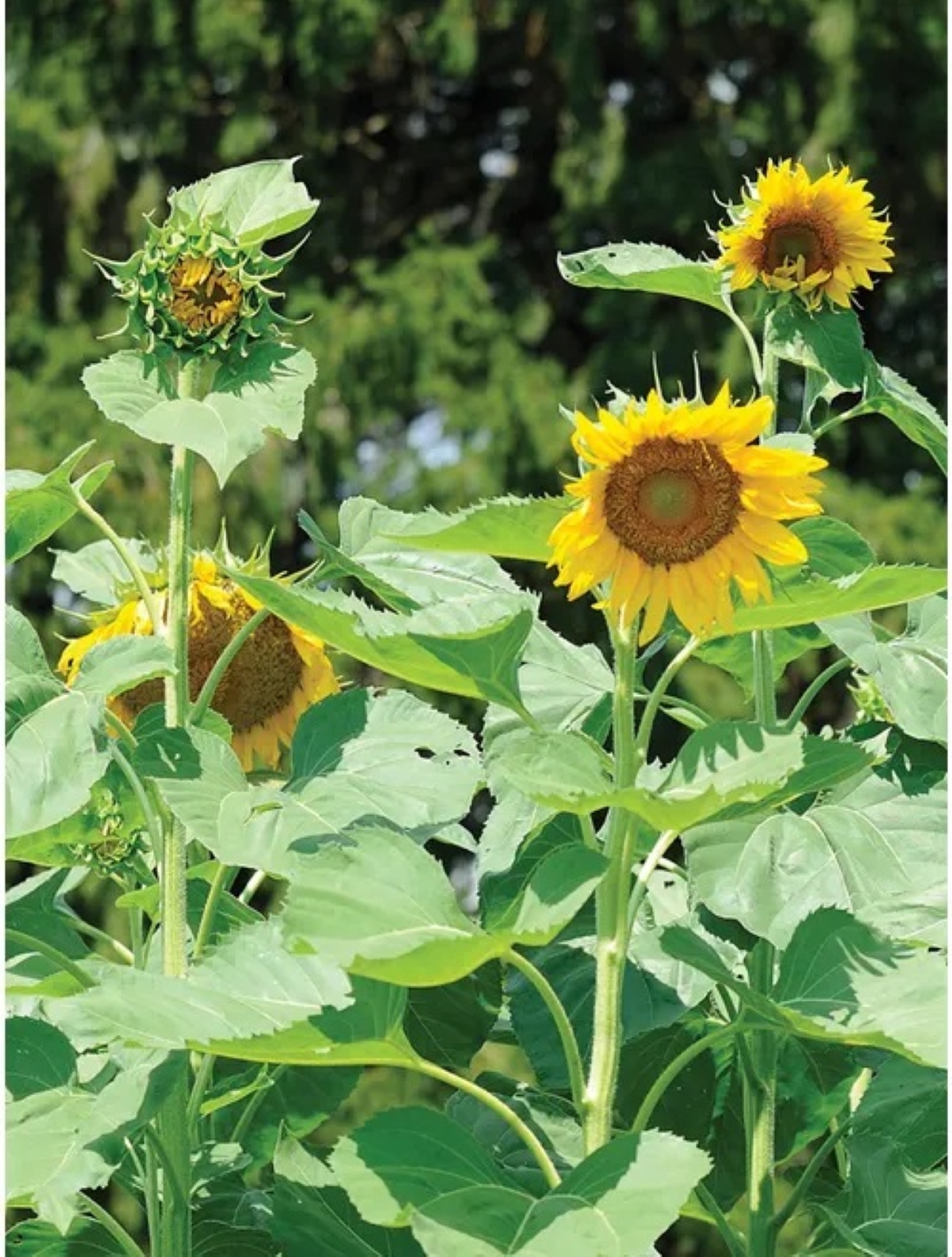
It’s easy to plant sunflower seeds directly in the garden after the last frost of winter. Drought-resistant and heat-tolerant, these sun lovers aren’t fussy about soil type, but are heavy feeders that benefit from compost and fertilizer. Large flowers of golden yellow (or red, orange, and bicolor) atop large, coarse stems follow the sun from mid-summer through fall. Various types grow from 3 feet to 10 feet tall. All of them attract birds.
Get seeds for tall Pikes Peak Sunflowers at Burpee for $5.95.
RELATED: 14 Old-Fashioned Flowers That Still Look Great in Today’s Home Gardens
5. Four O’Clock (Mirabilis jalapa)

Trumpet-shaped flowers of white, pink, red, purple, and yellow bloom in the late afternoon and evening, emitting a sweet fragrance all night, from mid-summer to fall. Preferring rich, moist but well-drained soil and full sun, four o’clocks produce one large dark brown seed per flower. Seeds should be soaked before planting directly in the garden after the last frost. For earlier blooming, start seeds indoors 6-8 weeks before spring. Germinating in 7-14 days, the plants quickly grow to 1 to 3 feet wide.
Get Four O’Clock Marble Mix seeds from Burpee for $5.45.
RELATED: How Starting Seeds Indoors This Year Will Help You Grow a Better Garden Than Ever
6. Sweet Pea (Lathyrus odoratus)
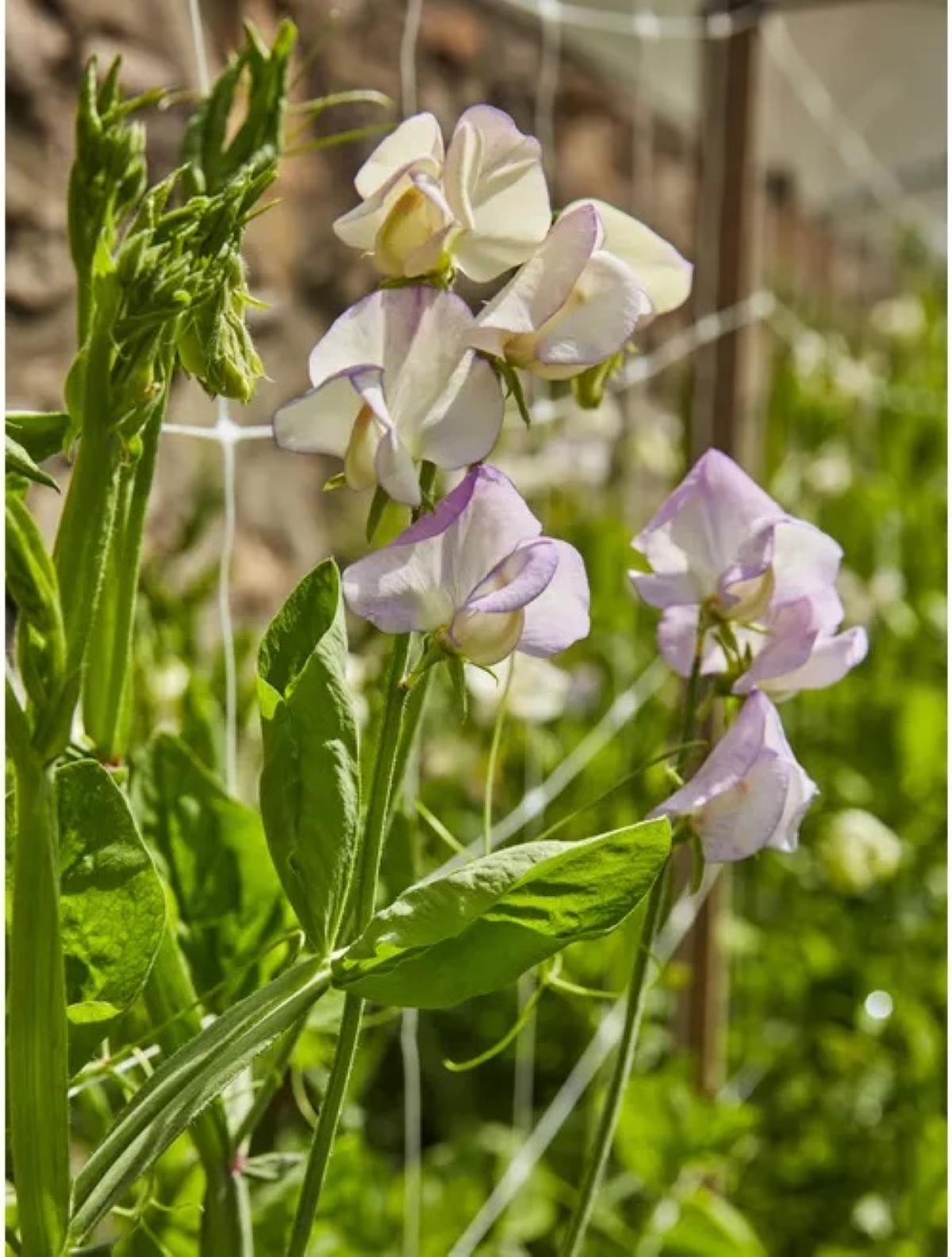
An attractive addition to cottage gardens, this fragrant climber needs support to twine around. Large, pea-shaped seeds are slow to germinate, so they should be planted directly in the garden in late winter or early spring as soon as the soil is dry, or started indoors 6-7 weeks before spring. Hungry plants, sweet pea benefits from compost and fertilizer. They need full sun and rich, moist, well-drained soil to produce loads of pink, red, purple, white, blue, and peach flowers, which make a lovely addition to cut bouquets.
Get High Scent Sweet Pea seeds at Burpee for $6.95.
7. French Marigold (Tagetes patula)
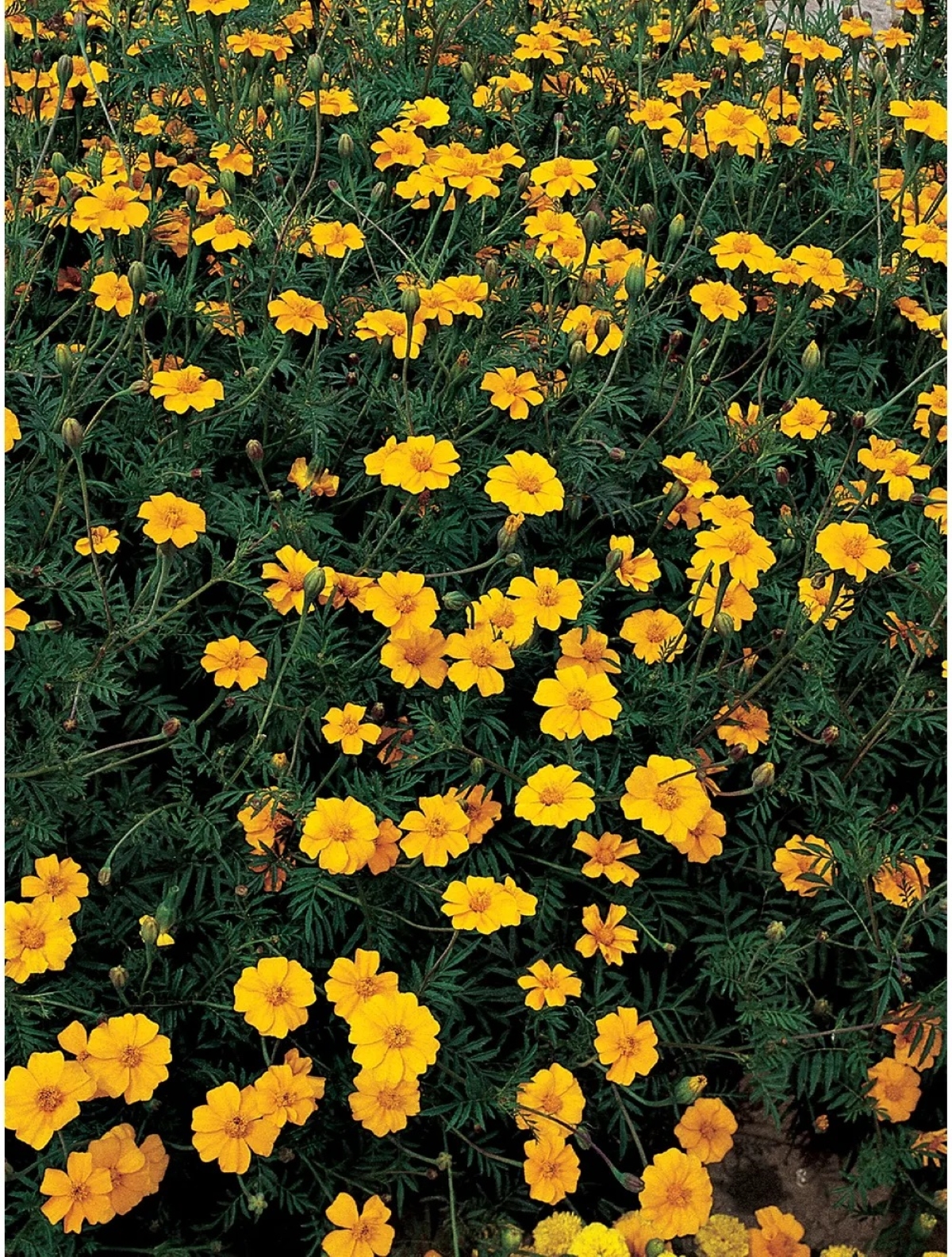
Of the three varieties (African, French, signet), French marigolds have the longest bloom time. Short, busy plants grown in full sun produce yellow, orange, and magenta blooms eight weeks after sowing until fall. Germinating in less than a week, they’re easy to sow and are easy seeds to harvest for planting next year. Because they release thiophenes into the soil that kill root-rot-causing nematodes, marigolds make good companions for vegetable plants.
Get the Nema-Gone Marigold seeds at Burpee for $9.95.
RELATED: 14 Long-Lasting Flowers for Your Yard
8. Shasta Daisy (Leucanthemum superbum)
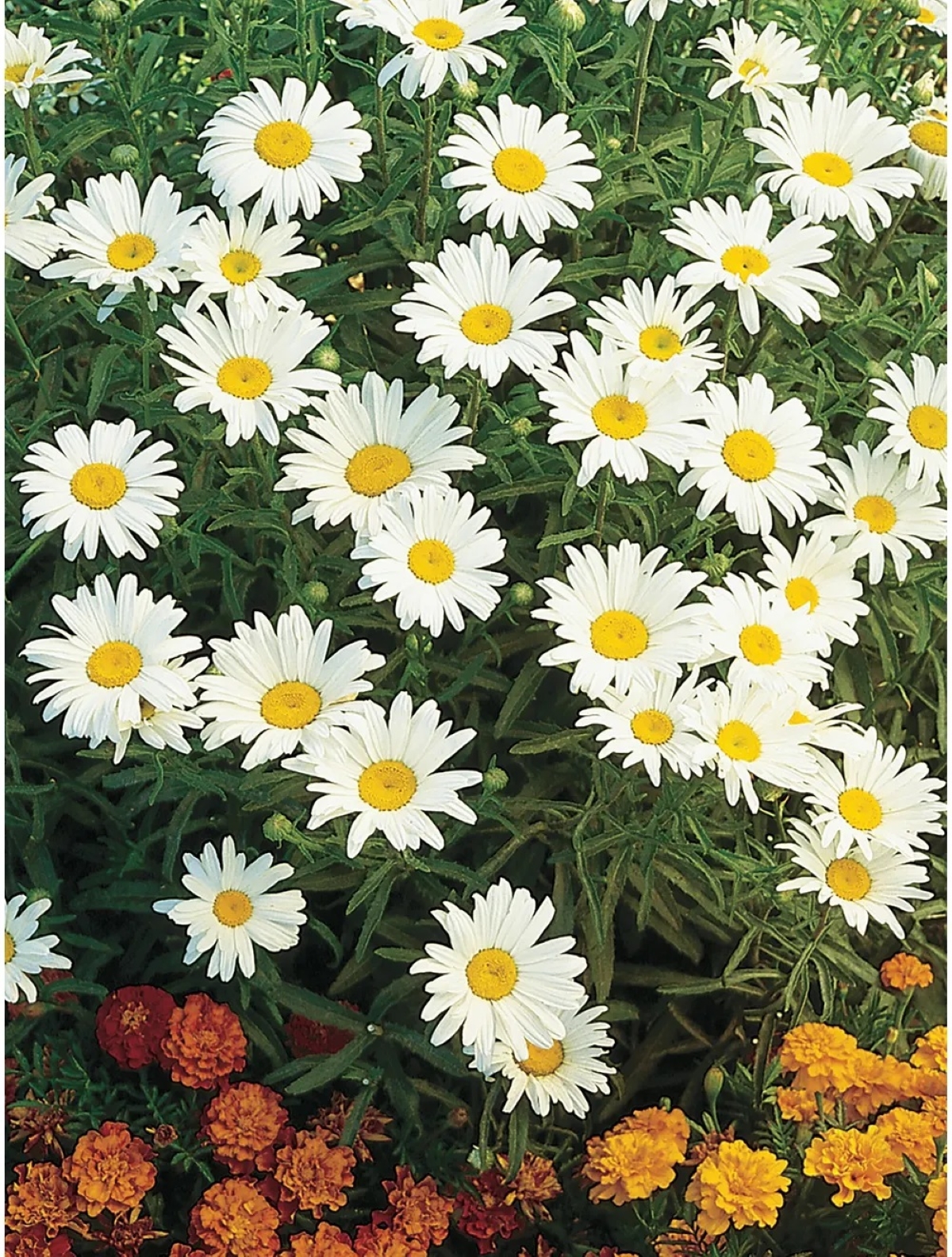
This classic daisy attracts pollinators and yields excellent cut flowers. Shasta daisies tolerate full sun, partial shade, and various soil conditions if they’re well-drained. This white-petaled beauty is deer-resistant, drought-resistant, and rarely troubled by pests or disease. It doesn’t need much once established and will reappear in the garden for years, although new plants may be of a different type than the one you originally seeded. It is toxic to cats and dogs.
Get Silver Princess Shasta Daisy seeds from Burpee for $4.45.
9. Moss Rose (Portulaca grandiflora)

Considered a flowering succulent, moss rose is ideal for sunny spots with poor or sandy soil. Low-growing, it can be used as a ground cover. It’s deer-resistant, drought-resistant, and tolerant of most soil types. It is, however, toxic to dogs and cats. Bright yellow, orange, pink, and red flowers bloom in abundance from early summer to frost. Seeds can be planted directly in the garden or started indoors 6-8 weeks before spring. Plants will sometimes self-seed.
Get the Portulaca Sundial Hybrid Mix seeds at Burpee for $4.95.
10. Morning Glory (Ipomoea purpurea)
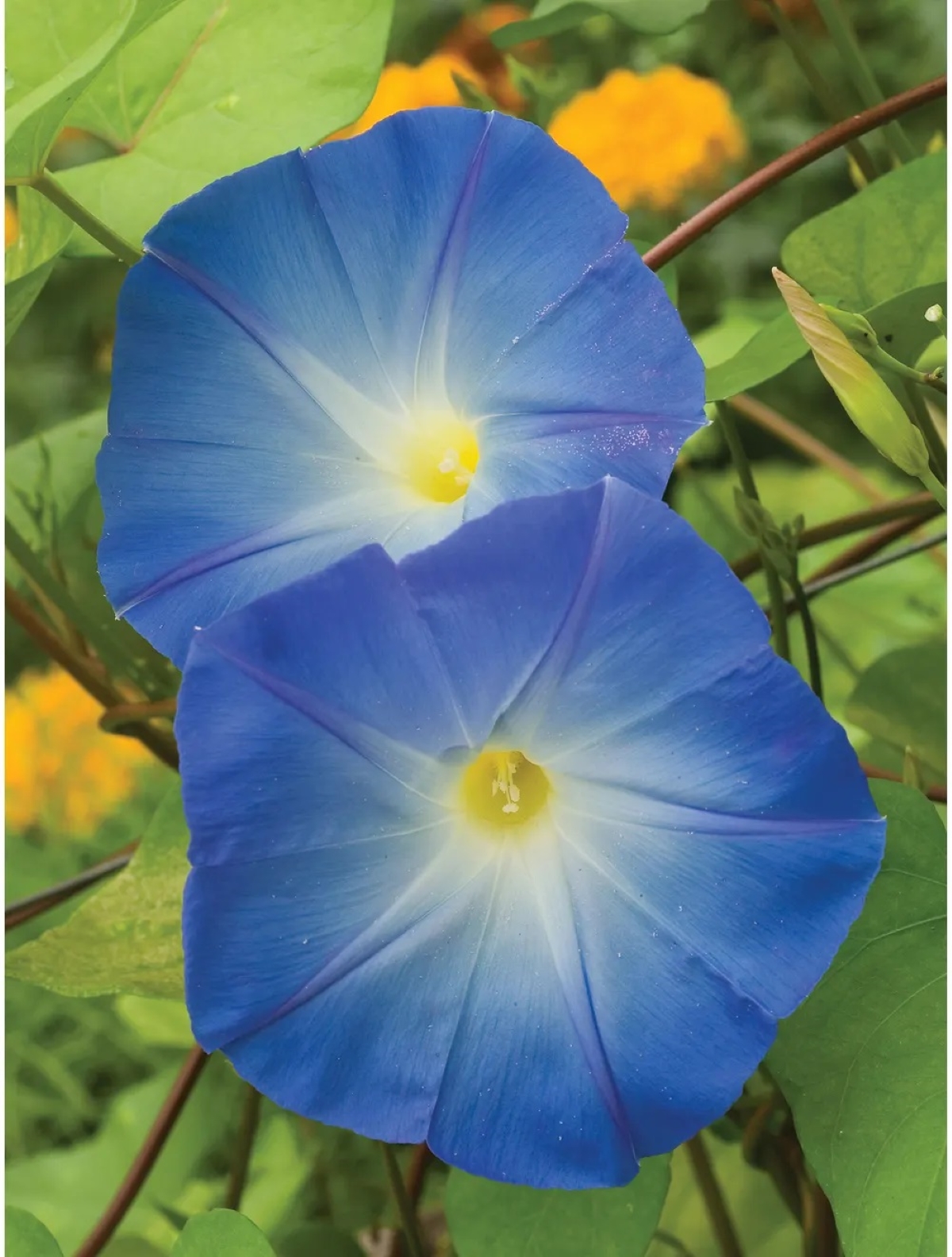
From early summer to fall, this fast-growing vine produces trumpet-shaped flowers in blue, purple, white, pink, red, and magenta that attract pollinators. Because it’s cold-sensitive, disease-resistant morning glory should either be started indoors or planted directly in the garden only after all danger of frost has passed. For best results, file and soak the hard seed coats before planting. Then give them full sun and moist, well-drained soil.
Get Heavenly Blue Morning Glory at Burpee for $4.95.
RELATED: This Age-Old Winter Gardening Hack Will Save You Time (and Money!) Come Spring
11. Columbine (Aquilegia)
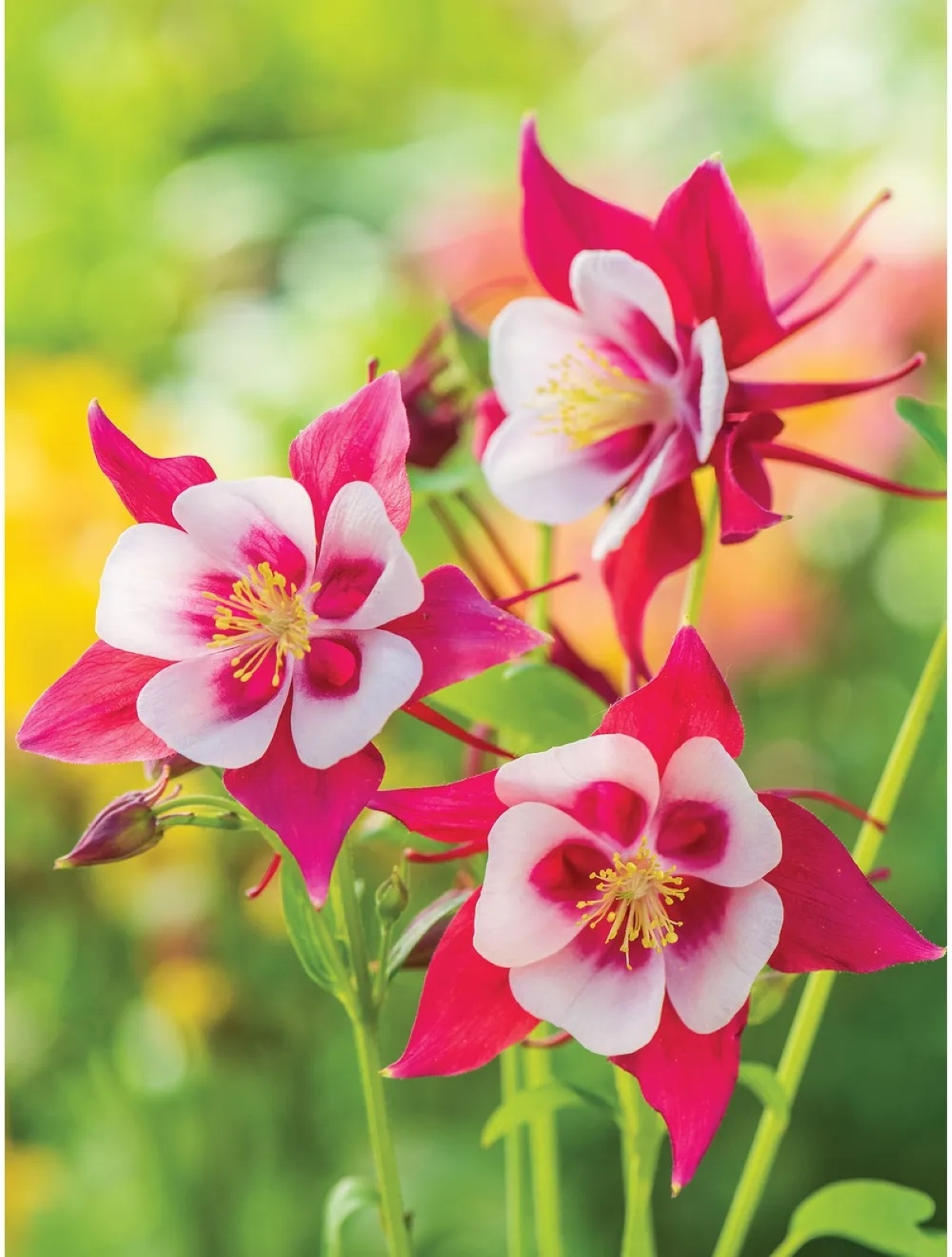
Columbine’s showy, two-toned flowers in blue, yellow, purple, red, pink, and white resemble jester’s caps, with long narrow “spurs” streaming from the back of each flower. They can tolerate most growing conditions, other than poorly draining soil and too much sun. Equally ideal for both rock gardens and woodland gardens, they attract hummingbirds and other pollinators. Easily grown from seed planted directly in the garden, they’re often self-seeding. Columbine seeds need cold stratification in order to germinate; place them in the back of the refrigerator four to six weeks before you plant them.
Get Early Bird Red & White Columbine seeds at Burpee for $5.95.
RELATED: 11 Plants You Should Never Start Indoors
12. Calendula (Calendula officinalis)
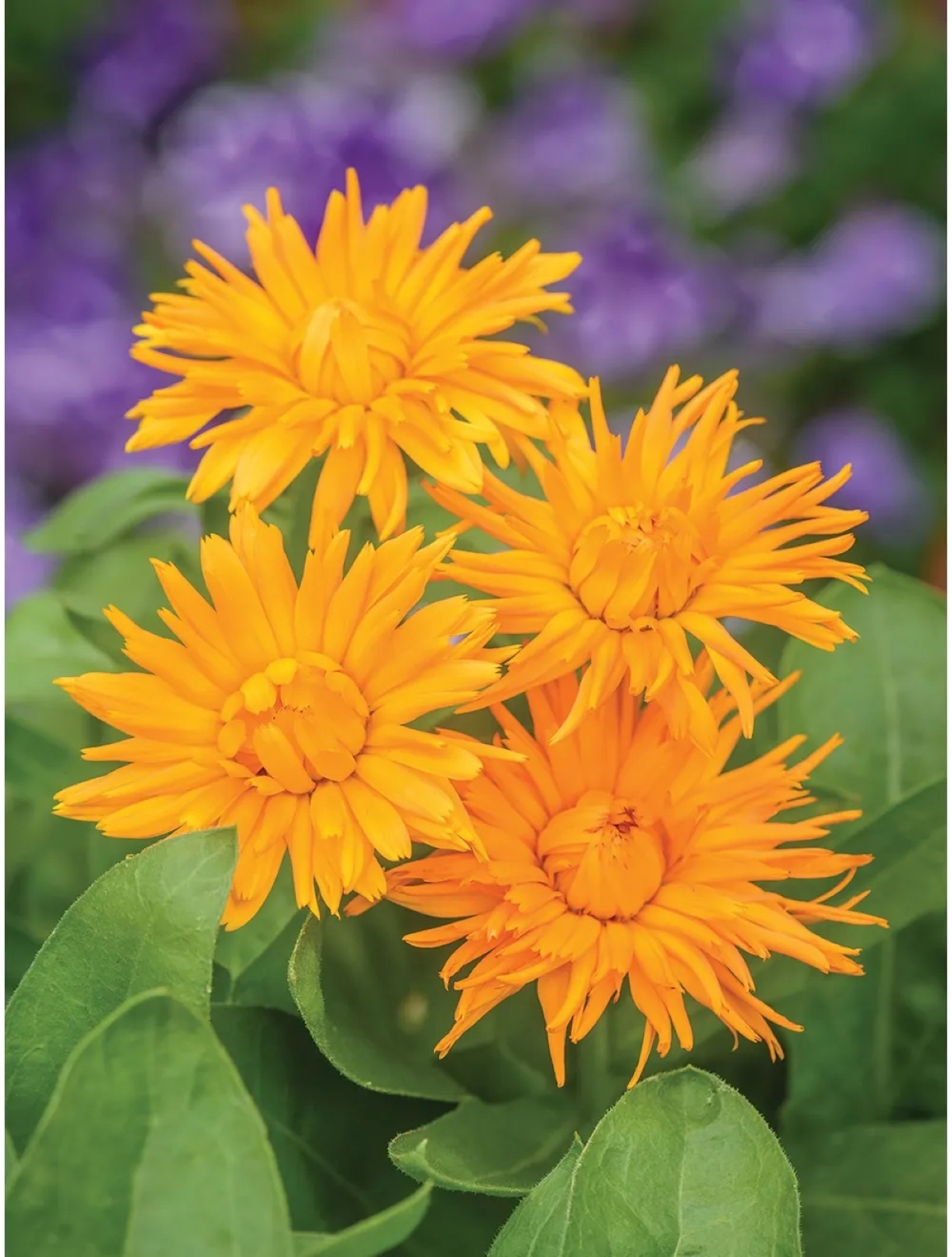
Known as a “pot marigold,” the calendula has daisy-like petals of bright yellow or orange. Profuse bloomers, they prefer full sun to partial shade, with moderately moist soil with lots of organic matter. Hot summer temperatures can cause wilting. Calendula is good for borders, containers, and cutting gardens. Seeds can be started indoors or sown directly in the garden for easy germination. Plants often self-seed.
Get Calexis Orange Calendula seeds at Burpee for $4.95.
RELATED: Solved! Do Seeds Expire?
The prices listed here are accurate as of publication on February 28, 2023.


